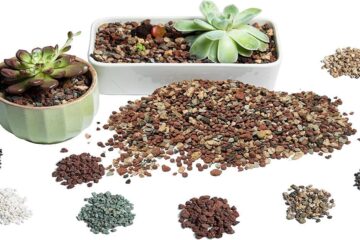Jade plants are pretty much a self-contained classic for any house owner. Generally, they prefer bright light and occasional watering during spring and summer. So why does my jade plant white spots in its preferred environment?
Why white spots on the jade tree?Jade plant white Spots are caused by high sodium levels in artificial soft water, calcium and magnesium carbonates in hard water, and minerals or salts from over-fertilization. White spots can also be caused by overhead watering, powdery mildew (a fungal infection), or mealybugs and scale.
Jade Plant White spots can be a natural phenomenon or an indication of an existing fungal disease, whichever; There are simple methods for identifying and dealing with problems.
Why does my jade plants white spots?
Content Overview
You’ll be happy to know that the Jade Plant white spots surrounding your jade plant’s leaves are usually a build-up of mineral deposits caused by factors including soil, hard water or over-fertilization. Mineralization manifests itself by the formation of small white spots on the leaves of jade plants.
In addition, jade plants are generally undemanding plants; However, they are susceptible to over-watering and various diseases. Therefore, pests like mealybugs and scale explain why your jade plant has little white spots.
Here the causes of Jade plant white spots are the following-
Mineral build-up in the soil causes Jade plant white spots
Jade plants generally require infrequent repotting. So, if you don’t change or freshen up the potting soil, the goodness and nutrients slowly decrease. Instead, a mineral imbalance occurs that leads to salt deposition.
Unfortunately, salt build-up is common in indoor container plants, especially in potted plants that receive liquid fertilizers mixed with artificially softened water. Soft water contains sodium salts that help reduce or replace high calcium and magnesium levels in the water.
Large jade plants, at least 1/2 inch thick, rooted, at least 12 inches tall
The white spots on jade plants are caused by these soluble salts in the water, which condense and then turn into a white crystalline residue as the water evaporates.
Numerous symptoms indicate salt accumulation in host plants, some obvious, such as Jade plant white spots on leaves and a visible salt deposit on the soil surface. These tiny Jade plant white spots on leaves are usually caused by overhead water.
Additionally, you will notice a crust of salt on the surface of the soil. By inserting your finger into the soil, the crust will usually break. Eventually, you may even be able to notice that the jade plant pot begins to develop salt crystals on its inner surface.
If you allow salt build-up to progress, your jade plant will suffer from more serious conditions including yellowing leaves, stunted growth, wilting, and leaf drop.
Your best bet to prevent your plant from these worrisome symptoms is to provide new soil, in some cases repotting the plant.
Watering with hard water causes Jade plant white spots
Hard water usually contains high dissolved mineral content, mainly calcium and magnesium carbonates, sulfates, iron, and bicarbonates.
Also, jade plants are succulents that store most of their water content in their succulent, fleshy leaves. So, when you water your jade plant with hard water full of calcium and magnesium, the plant’s moisture levels become unbalanced.
Then, to re-balance the plant’s target salt content, it transpires through leaf pores to remove excess minerals and salts. Instead, evaporation leaves salt residue and white spots on the leaf pads of your jade plant.
As previously mentioned, overhead water causes white spots on your jade plant; As excess water evaporates into the air, salt deposits are left behind.
A soft, damp cloth can usually remove these white spots to restore the leaf’s appearance.
However, it’s best to try using an alternative solution such as filtered water or flushing your plant’s soil occasionally to avoid long-term damage from using too hard water.
Over-fertilization causes Jade Plant white spots
Unfortunately, potted plants have a limited amount of soil to work with; Over time, the soil is depleted of nutrients, and your jade plant relies on a small amount of fertilizer for that extra growth.
So, when you ‘double feed’ or add too much fertilizer to the Jade plant soil, the unabsorbed minerals from the fertilizer remain in the soil. Mineral build-up potentially causes an irritating salt residue and white spots on the leaves of your jade plant.
Fortunately, a simple process called leaching helps get rid of this build-up. Therefore, it is recommended to regularly leach your jade plants and other indoor plants to remove excess minerals and salts and keep their soil clean.
Remove salt residue on soil surface. Next, place your potted jade plant in a sink or somewhere outside where water can run freely. Then, slowly pour lukewarm water into the container without overflowing.
Pour at least twice as much water as the pot can hold so you can wash off most of the excess salt.
It’s best if you leach your jade plants every four to six months or consider replacing the potting soil completely.
Powdery mildew causes on jade plant white spots
Powdery mildew may be one reason why you are seeing on your jade plant white spots . This white mold is a fungal disease that commonly affects a variety of house plants.
When this fungus first begins to grow, it produces small white circular spots over a wide area of the plant. For jade plants, these spots first appear on the leaves. In later stages, powdery mildew can be identified by strings of fluffy fungi spreading to other parts of the plant.
If you’ve considered the physical appearance of powdery mildew but still aren’t sure why you’re seeing on your jade plant white spots, consider your plant’s environment.
Powdery mildew growth is common in low light, low air circulation, cool temperatures and high humidity. If you see on Your Jade Plant white spots in a habitat with these characteristics, the spots are likely powdery mildew.
Powdery mildew treatment for Jade plants
If you find that powdery mildew is in its early stages, treatment should be fairly simple and your plants are unlikely to suffer any damage. A popular home remedy to spray the leaves of your jade plant is one tablespoon of baking soda, one teaspoon of non-detergent soap to one gallon of water.
This can be used on a daily basis, if you have recurring Your Jade plant white spots. Powdery mildew produces spores that you can’t see and this spray keeps them under control.
Excess salt can on jade plants cause white spots
Jade plants are succulents that store most of their water in their fleshy leaves. If watered with a source that is high in salt, leaf moisture will become unbalanced. It can sometimes see on jade plant white spots.
When the jade plant tries to re-balance the salt content in the leaf, it transpire and excrete the salt through the leaf pores. Then, the salt water will evaporate and leave a salt residue on the leaves.
Unfortunately, this Jade Plant white spots looks very similar to the early stages of powdery mildew. Overhead watering can cause of your jade plant white spots on the leaves , as excess water evaporates and leaves salt deposits on the leaves.
The easiest way to tell the difference between a fungal infection and excess salt is to wipe the leaves with a damp cloth and wait a week. If the spots recur quickly and start to look like fluffy fungus, it’s probably powdery mildew. Salt deposits take longer to reappear.
Insect infestations cause on jade plant white spots
Picture via Sucsforyou
Stress from insect attacks can cause chlorosis in your jade plant. Chlorosis is caused by the plant’s inability to produce chlorophyll, which causes discoloration of the leaves.
Jade plants are attacked by mealy bugs and spider mites. It is crucial to distinguish between these two considerations when applying remedies.
Mealybugs
Generally, mealybugs are found on jade plants. You can identify mealy bugs by their appearance as small, flat, white bugs. You will see them trying to hide in the twigs and branches of the jade tree.
If you determine that your jade plant has bugs, you can try to remove them. A popular remedy involves rubbing alcohol on a cotton swab to remove insects and eggs. One way to prevent this is to spray the entire jade plant with rubbing alcohol and water for a month.
Spider mites
Identify spider mites by looking for Jade plant white spots on your leaves. They are small, red, burrowing, insects. At a later stage, spider webs will also be found on the leaves and stems of your jade plant. If you don’t treat the symptoms, a spider infestation can kill the plant.
Shake your plant every so often and see if any red spider mites have fallen to determine if this is a spider problem. If you find that you have spider mites, rubbing alcohol and water on the jade plant every three days for a month will kill the mites and their eggs.
Rare insects
Jade plants are also vulnerable to leaf damage from insects such as aphids and thrips. An equal mixture of rubbing alcohol and water can be sprayed on plants to quickly eliminate these bugs in an open environment.
Traditional insecticides should not be sprayed on jade plants as they can injure the leaves of the plant. The sticky leaves of jade plants can suffer from severe insect infestations.
Solutions of The Jade Plant White Spots
If you identify the cause of jade plant white spots on ,you will be one step closer to having a healthy jade plant. To get back on track after a powdery mildew infestation or insect problem, it’s important to take immediate remedial measures.
Maintaining an optimal environment for your jade plant is really important to prevent the recurrence of spot problems that cause of jade plant white spots.
Light Conditions
Your jade plant needs six hours of full sunlight per day for optimal growth. Otherwise, it will start to expand and turn into legs. Low light levels can cause reduced health and make it more susceptible to pests. Powdery mildew can also grow in low light.
You can keep your jade plants healthy and problem-free by placing them in a south-facing window.
Fertilizer
A healthy jade plant requires fertilizing the soil two to three times a year with a water-soluble fertilizer. You should make sure that your jade plant has the right supply of nutrients to keep it healthy and protected from diseases and pests that can cause of jade plant white spots on the leaves and stems of the jade plant.
Pruning
By pruning your plants, you can help ensure their health and keep them looking their best. If left to their own devices, jade plants tend to grow quite large, so you’ll usually need to cut them to the size you like.
Additionally, plants grown indoors can become leggy and stiff due to insufficient light, so pruning is helpful in maintaining vigorous and bushy jade plants that look better.
Repotting
Jade plant White spots can recur if you have a severe mildew problem. It is a good idea to repot the plant and remove most of the leaves.
Compared to many other houseplants, its roots are better confined to a container. If you have to repot it to fix the problem, make sure the plant is in the growing season.
After transplanting, wait a week before watering the plant to ensure proper root settlement. It is also important to dry the soil before moving the plant to prevent the spread of mold or insects.
You will get of jade plant white spots on the leaves even if you do not provide proper light, temperature, humidity and ventilation conditions in your home.
Propagation
A jade plant white spots due to damage from insect attacks will pass time, but will soon begin to lose its health and appearance. Propagation from leaves or cuttings will help maintain a healthy plant.
Related Post :How To Propagate a Jade Plant?
Pro tips for a healthy jade plant
If your jade plant has white spot and you need to take corrective action, consider the pro tips below to encourage a healthy environment for your jade plant. A vigorous jade plant will be more resistant to pest infestation and damage caused by powdery mildew.
Always let the potting soil dry out before watering. As a succulent, jade plants naturally require less water than traditional houseplants. Keeping the watering schedule on point so you don’t stress the plant is a great way to make your jade plant more resistant to powdery mildew.
A decrease in the amount of water present in the soil makes it less habitable for fungal growth. In winter, jade plants need less watering because they are not actively growing.
Proper watering can be one of the most difficult skills to master when caring for houseplants. I wrote a great article to help you master the art of watering indoor plants.
Make sure you provide plenty of bright light for your jade plant, avoid excess humidity, and make sure the temperature is generally kept between 65°F and 75°F (18°C – 24°C). In this situation, you can avoid many of the causes of white spots on jade plant leaves and grow a much healthier plant overall.
Conclusion
Jade Plant White spots are not only unsightly but can also damage your plant. Therefore, identifying, resolving and preventing jade plant white spots from reoccurring is beneficial to the plant.
It is best to prevent salt build-up by over-watering (leaching) jade plant containers every four to six months to remove salt build-up before it becomes a problem.
Additionally, try to prevent salt build-up by avoiding excessive fertilizer application or using artificially soft water or hard water. Finally, avoid overhead water and, even if the jade plant is hardy, keep an eye out for pests like mealybugs and scale.






